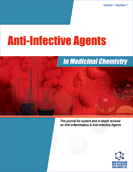Abstract
Ureides are compounds, which essentially incorporate urea as a substructural component either in open or cyclic form. Ureido derivatives are one of the oldest classes of bioactive compounds, widely used as anti-infective agents. Several of these compounds, including aminoquinuride, aminocarbalide, imidurea, cloflucarban, nitrofurazone, urosulfan, are viomycin are used in clinical situations. One of the ureides, the triclocarban is compulsorily used as antibacterial agent in cleansing and disinfecting solutions in hospitals, household, cosmetics, toys, textiles and plastics. It disables the activity of ENR, an enzyme vital for building the cell wall of the bacteria and fungus. Besides, the ureido-penicillins in clinical use, there have been several ureido-lactam derivatives which have been reported to exhibit significant antibacterial activity. A urea containing dipeptide TAN-1057A isolated from Flexibacter spp. has potent bioactivity against MRSA. The metal complexes of sulfonyl ureido derivatives are effective antifungal agents by inhibiting the activity of phosphomannose isomerase, a key enzyme in the biosynthesis of yeast cell walls. There have been a number of ureides including the cyclic ureas, which are potent HIV protease inhibitors and display significant anti-HIV activity. The urea derivative, merimepodib that has been derived using structure based design, is a potent inhibitor of IMPDH and is active against hepatitis-C infection. This review will primarily focus on the significant work reported for this class of compounds including design, synthesis and biological activity.
Keywords: antibacterial activity, Enterococcus, topoisomerase, Heterocyclic antibacterial ureides, penicillins
 15
15





















